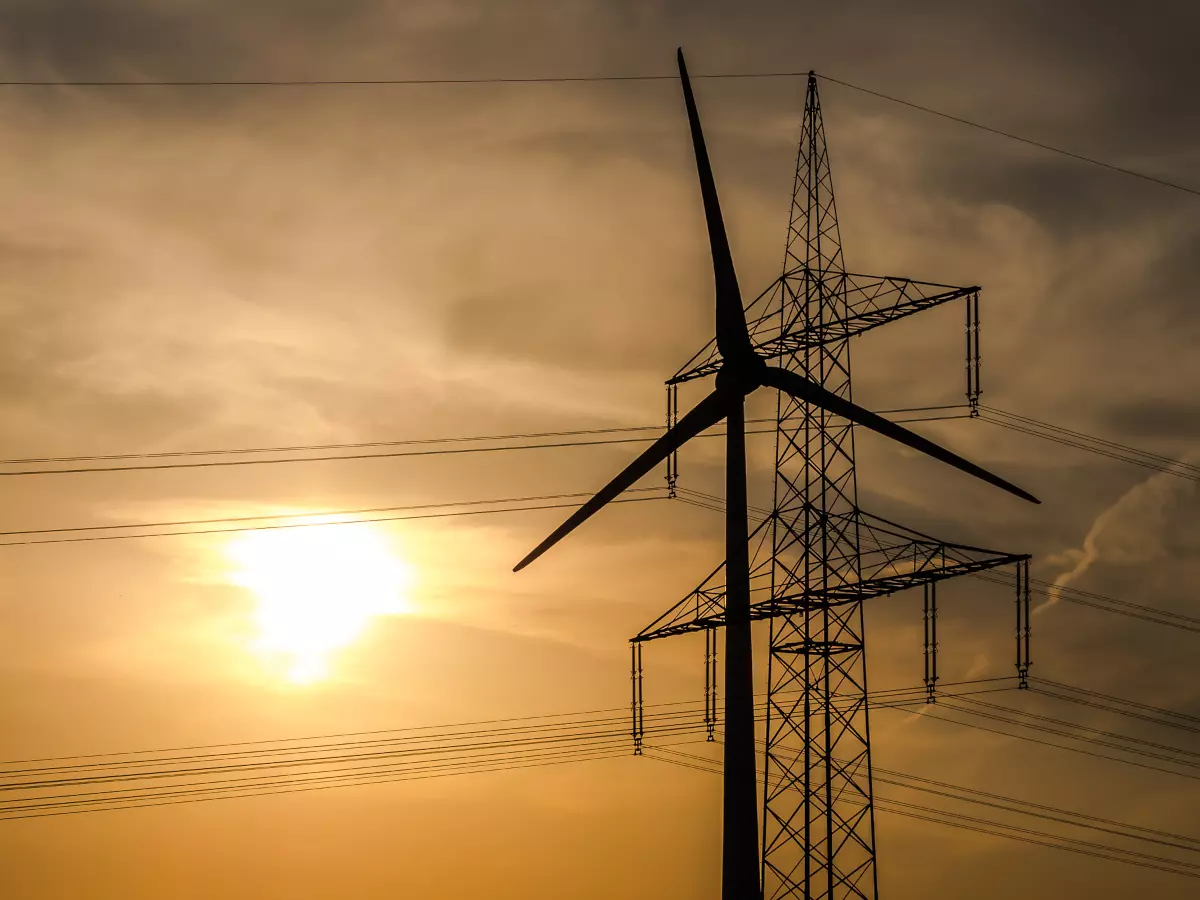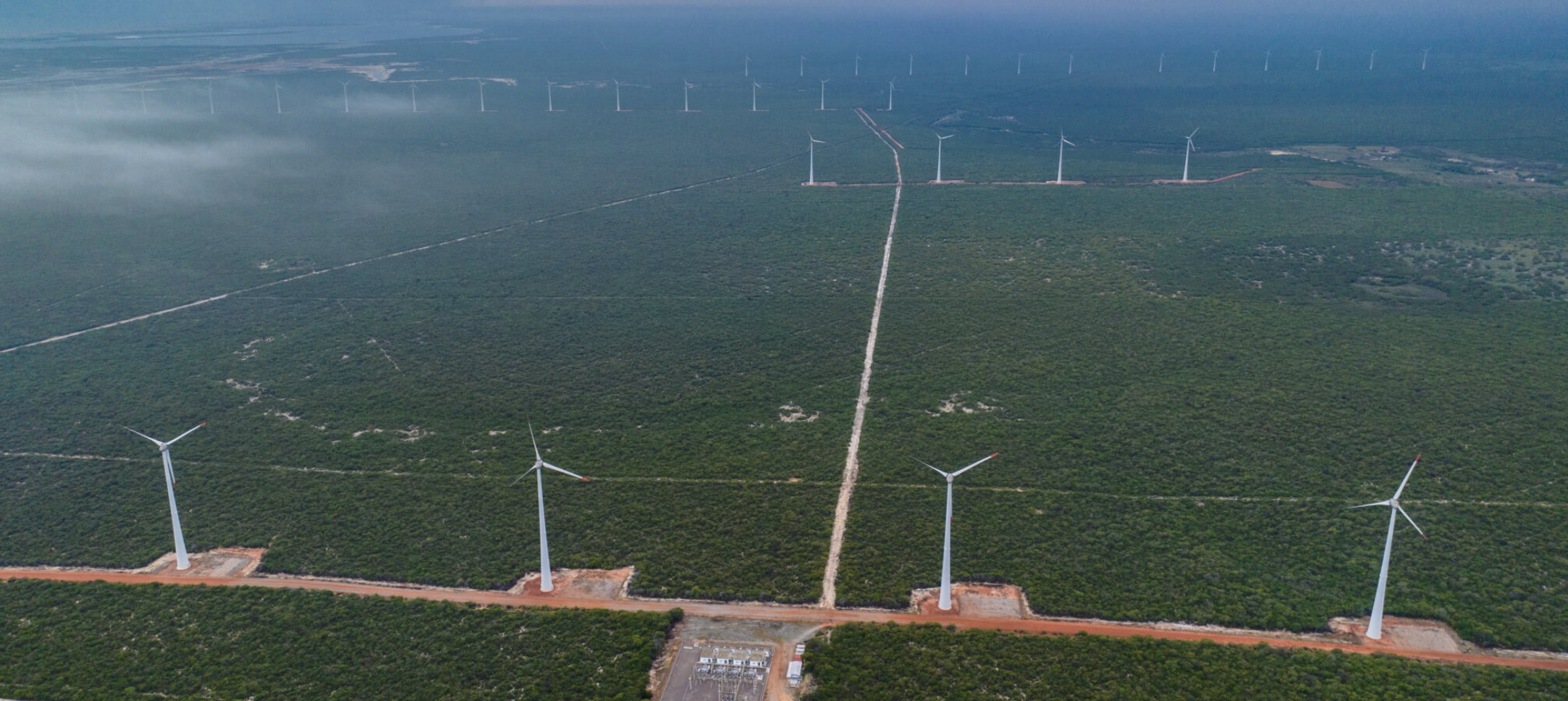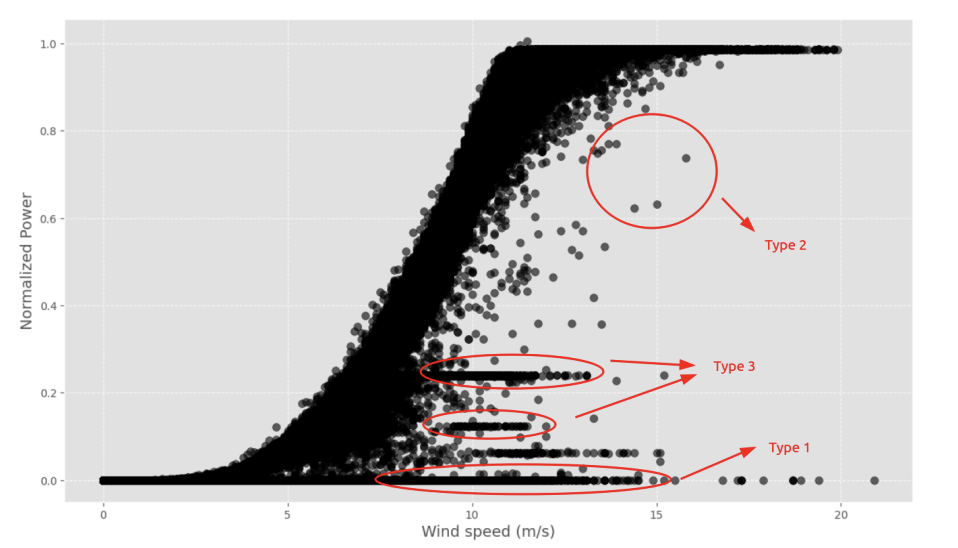How Transfer Learning Can Improve Wind Turbine Monitoring

A recent study presented at the Brazil Windpower 2023 conference, conducted by Catarina Gomes, Nathianne Andrade, Osmar Alexandre, Renata Takeshita, and Rodrigo Queiroz from the Delfos Energy technical team, explores how Transfer Learning techniques can overcome this limitation and enhance transformer temperature monitoring in wind turbines.
What is Transfer Learning?
Transfer Learning allows machine learning models to leverage knowledge acquired from one dataset to improve performance on another dataset with less available information. This approach has proven valuable in scenarios where data availability is limited, such as monitoring newly installed equipment.
The Case Study
The study evaluated two similar wind turbines, referred to as AEG01 and AEG02. The AEG02 turbine had a more comprehensive dataset, including transformer temperature records under various operating conditions. In contrast, AEG01 had a much shorter history, lacking sufficient records of critical variables such as high ambient temperature and high reactive power.
The researchers developed three different models:
- Baseline Model: Trained with the complete dataset from AEG02.
- Reference Model: Trained only with the limited data from AEG01.
- Transfer Learning Model: Initially based on the AEG02 model but fine-tuned with AEG01 data.
Key Findings
- Fewer False Positives: The reference model for AEG01 generated many false alarms for anomalies that were, in reality, normal operating conditions. The Transfer Learning model reduced these false positives, making monitoring more reliable.
- Faster Training: Since the neural network architecture of the baseline model was maintained, the Transfer Learning model trained about 30% faster than the reference model.
- Better Generalization: Transfer Learning allowed the model to correctly predict the impact of ambient temperature and reactive power on transformer temperature, even without direct records of these conditions in the original AEG01 dataset.
Impact on the Wind Industry
Applying Transfer Learning can accelerate the deployment of predictive models for new wind turbines, reducing the time needed to establish effective monitoring. This means less downtime, optimized maintenance, and improved operational efficiency for wind farms.
Additionally, this approach paves the way for future studies exploring knowledge transfer between turbines of different models or operating under varying climatic conditions.
Conclusion
Using Transfer Learning for transformer temperature monitoring in wind turbines has proven to be a promising approach to overcoming the limitation of historical data. With this technique, it is possible to obtain more robust and efficient models without having to wait years to collect sufficient data.
If you want to learn more about optimizing renewable asset performance with machine learning, stay tuned to Delfos Research.
To access the full study, fill out the form below:
Book a meeting
Let's connect and forge new partnerships
Custom Renewable Energy Solutions
Contact us today and join global operators who recovered up to 10% revenue and cut downtime by 18%


